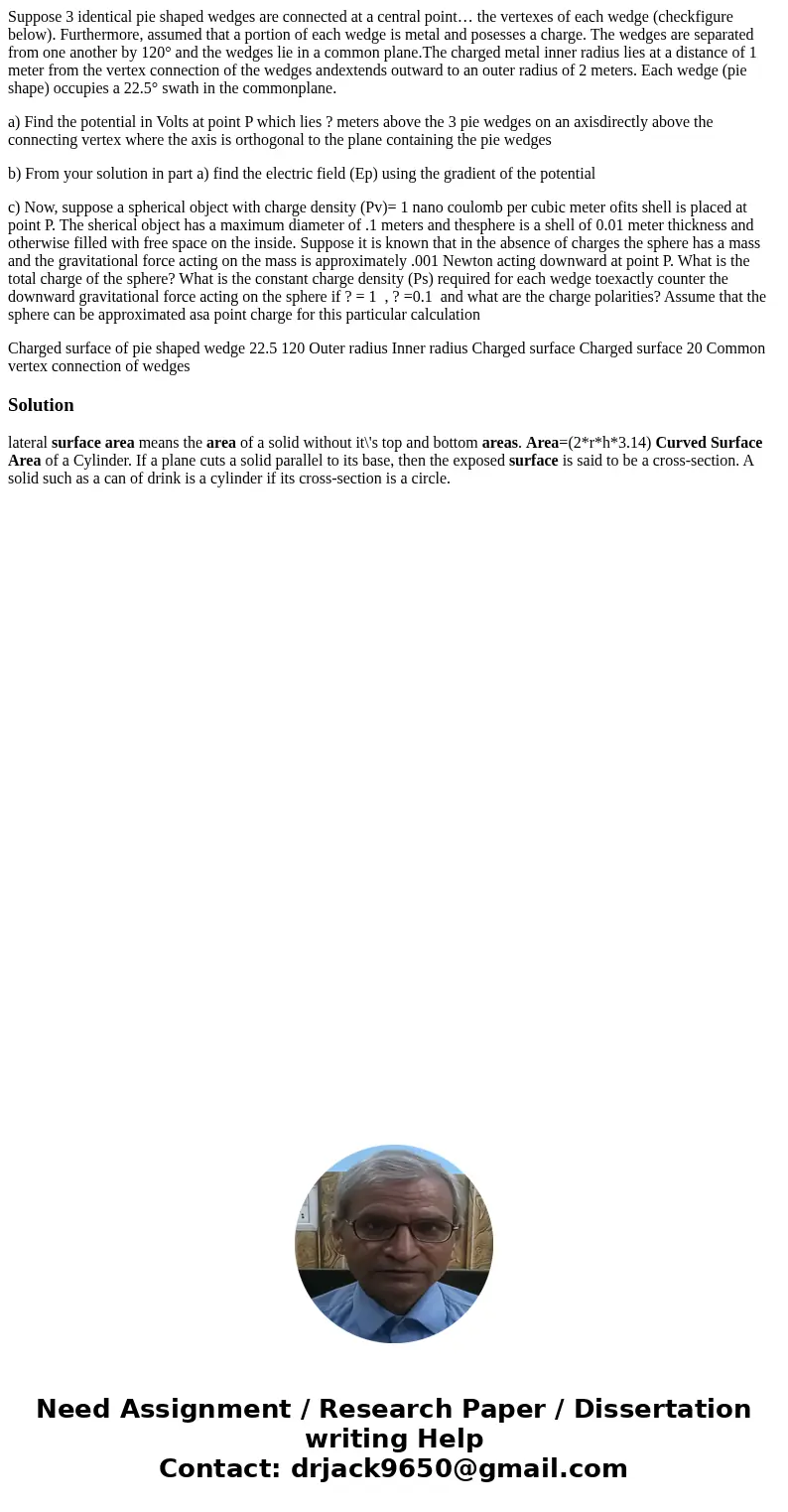Suppose 3 identical pie shaped wedges are connected at a cen
Suppose 3 identical pie shaped wedges are connected at a central point… the vertexes of each wedge (checkfigure below). Furthermore, assumed that a portion of each wedge is metal and posesses a charge. The wedges are separated from one another by 120° and the wedges lie in a common plane.The charged metal inner radius lies at a distance of 1 meter from the vertex connection of the wedges andextends outward to an outer radius of 2 meters. Each wedge (pie shape) occupies a 22.5° swath in the commonplane.
a) Find the potential in Volts at point P which lies ? meters above the 3 pie wedges on an axisdirectly above the connecting vertex where the axis is orthogonal to the plane containing the pie wedges
b) From your solution in part a) find the electric field (Ep) using the gradient of the potential
c) Now, suppose a spherical object with charge density (Pv)= 1 nano coulomb per cubic meter ofits shell is placed at point P. The sherical object has a maximum diameter of .1 meters and thesphere is a shell of 0.01 meter thickness and otherwise filled with free space on the inside. Suppose it is known that in the absence of charges the sphere has a mass and the gravitational force acting on the mass is approximately .001 Newton acting downward at point P. What is the total charge of the sphere? What is the constant charge density (Ps) required for each wedge toexactly counter the downward gravitational force acting on the sphere if ? = 1 , ? =0.1 and what are the charge polarities? Assume that the sphere can be approximated asa point charge for this particular calculation
Charged surface of pie shaped wedge 22.5 120 Outer radius Inner radius Charged surface Charged surface 20 Common vertex connection of wedgesSolution
lateral surface area means the area of a solid without it\'s top and bottom areas. Area=(2*r*h*3.14) Curved Surface Area of a Cylinder. If a plane cuts a solid parallel to its base, then the exposed surface is said to be a cross-section. A solid such as a can of drink is a cylinder if its cross-section is a circle.

 Homework Sourse
Homework Sourse